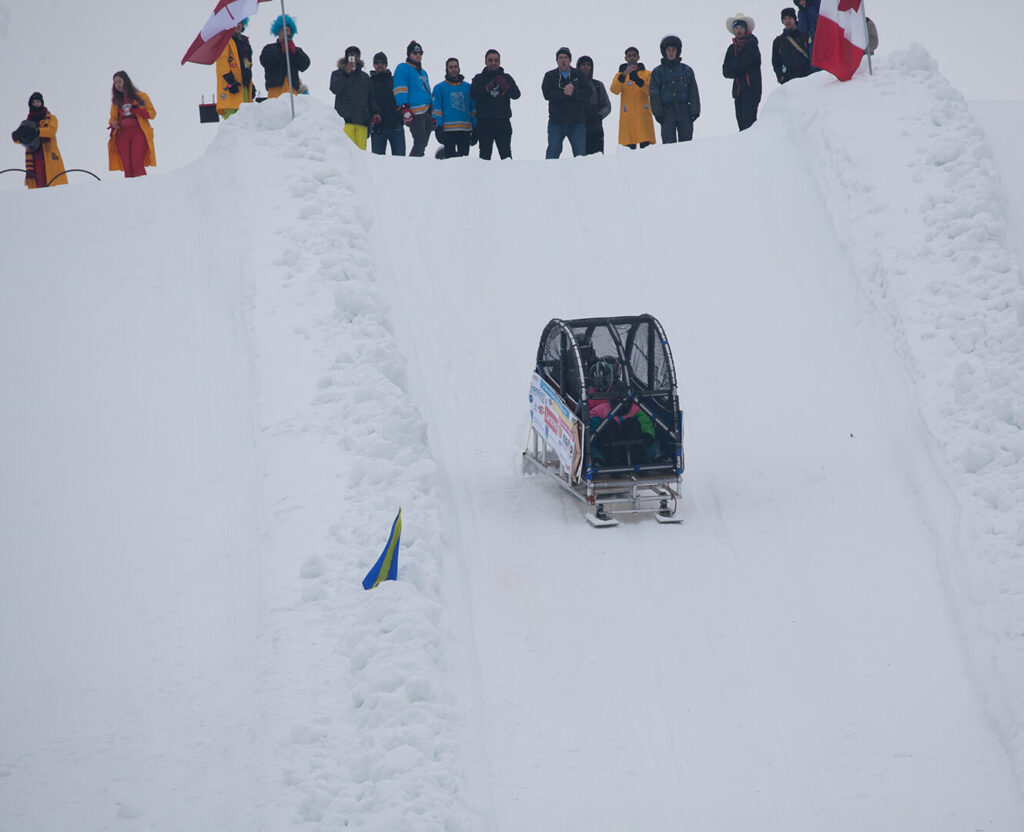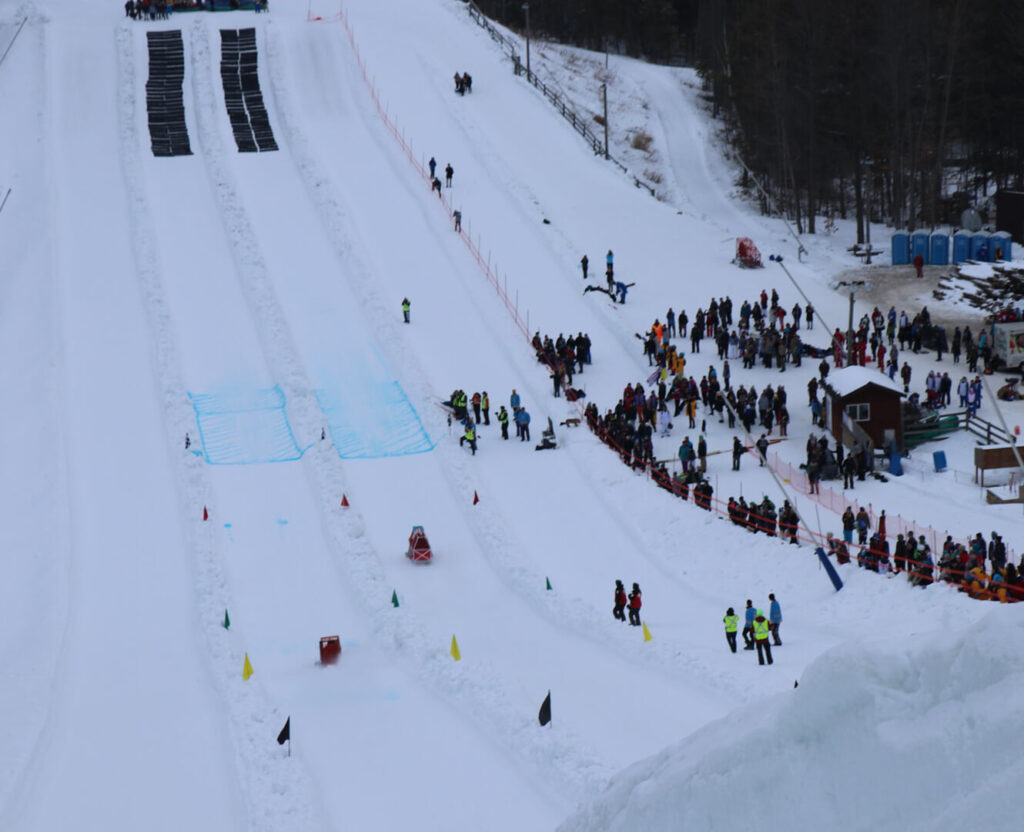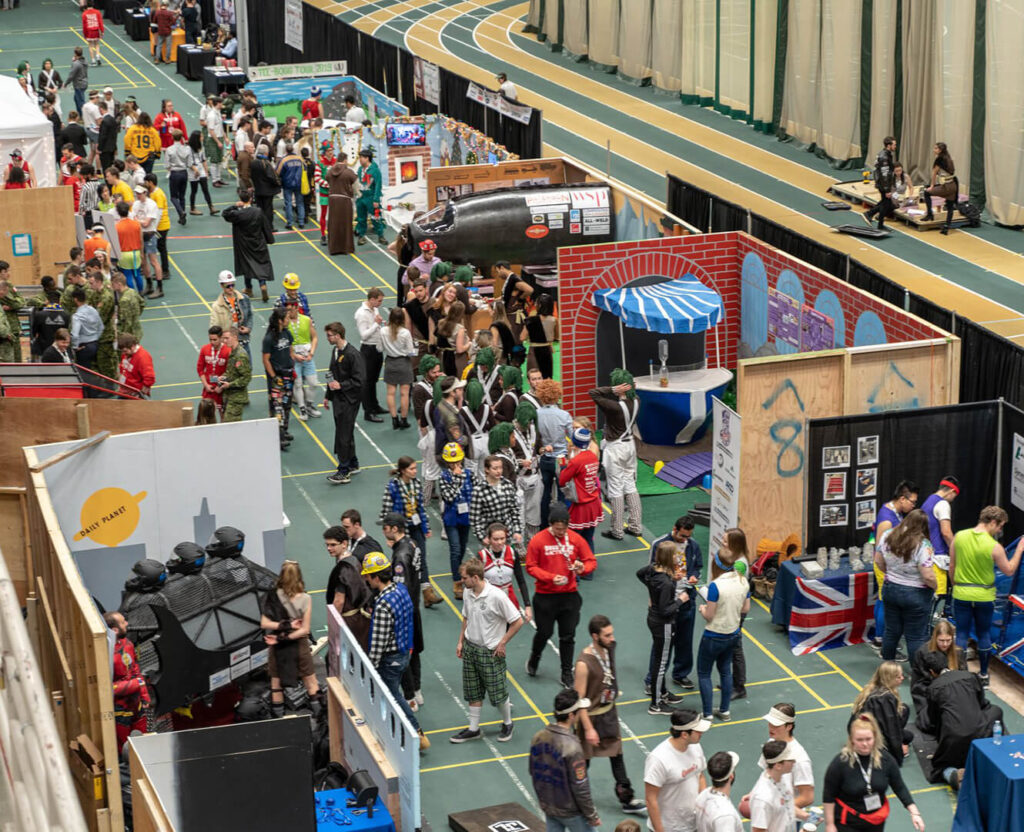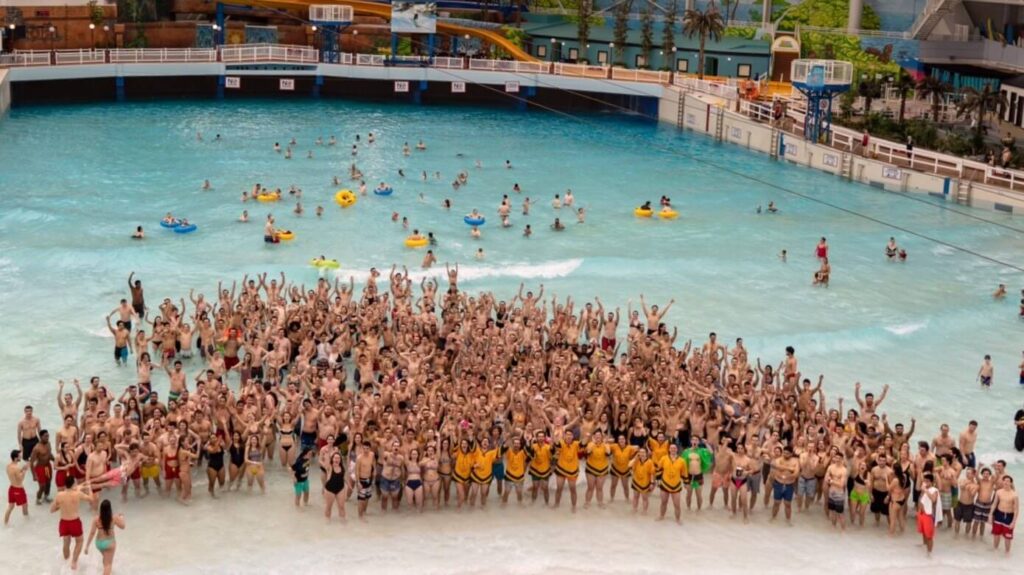By Ayanna Fata
The Great North Concrete Toboggan Race (GNCTR) began in 1974 by D. H. Simmonds, President of The American Concrete Institution. It has since become a student-run multidisciplinary challenge that includes university students from across Canada, the United States and even Europe from time-to-time.
Every year, the GNCTR’s location changes from Eastern to Western Canada. Last year’s event took place in Toronto, this year was supposed to take place in Calgary, but as of now has been pushed to next year due to the pandemic.
Transportation for the toboggans is sponsored yearly at no cost to students, but students can fundraise to cover the costs of their travel which can vary depending on where the competition is being held.

Supplied photo.
The competition is a four-day event, but the final day is when the real race happens.
Teams compete in races as well as technical and design challenges. These challenges are divided into four main categories: toboggan design, technical communication, race day and spirit. The competition started with only the technicals, but NAIT Toboggan club captain Tyson Shank mentioned that it’s evolved to be very focused on the spirit aspect.
Teams are required to enter with a theme for their toboggan as well as their costumes. Themes can be anything from specific pop-culture references to something completely out of nowhere.

Supplied photo.
“One of the teams this year…is doing lamps as their theme,” said Shank.
Teams have the opportunity to show off their theme with a short skit during the opening ceremony.
The other three days of the competition are packed full of activities for mingling between teams. On the second day, competitors are sorted into groups with other teams and compete in challenges around the city where the event is being held. That night, an event is held in a rented out bar for anyone who wants to participate and mingle with their teammates and the people they’ve met during the day.
The third day is Shank’s favorite, the technical exhibition. Teams set up booths and showcase their toboggan and theme to a panel of industry judges. This exhibition is open to members of the public as well.

Supplied photo.
“People in the engineering field talk to and see what students are up to. There’s usually a lot of booths set up by sponsors and other companies so it’s a really good networking opportunity,” said Shank.
Despite what it sounds like, this competition is not just for engineering students. There are benefits for almost anyone, many new skills can be learned and participants earn experience with budgeting, project managing, as well as engineering and design.
Since this year’s competition is cancelled, the club is starting their recruiting process for next year. On Thursday, February 4, the NAIT GNCTR club is holding a meeting for students who are interested in joining. For more information, contact NAITGNCTR@gmail.com.

Supplied photo.






